Lead monoxide
- CAS No.
- 1317-36-8
- Chemical Name:
- Lead monoxide
- Synonyms
- LITHARGE;LEAD(II) OXIDE;RED LEAD;ow;massicot;Lead oxid;c.i. 77577;plumbanone;massicotite;powder, <
- CBNumber:
- CB4119629
- Molecular Formula:
- OPb
Lewis structure
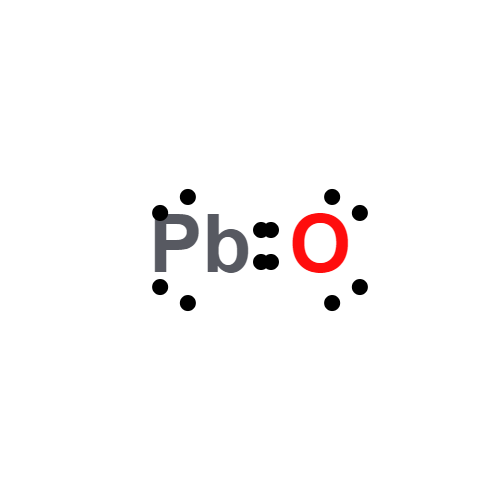
- Molecular Weight:
- 223.1994
- MDL Number:
- MFCD00011164
- MOL File:
- 1317-36-8.mol
- MSDS File:
- SDS
| Melting point | 886 °C(lit.) |
|---|---|
| Boiling point | 1470 °C |
| Density | 9.53 |
| vapor pressure | 10 mm Hg ( 0 °C) |
| refractive index | 2.67 |
| storage temp. | Store below +30°C. |
| solubility | Soluble in concentrated alkali, HCl and ammonium chloride. Insoluble in dilute alkali and alcohol. |
| form | powder |
| color | yellow |
| Specific Gravity | 9.53 |
| PH | 8-9 (100g/l, H2O, 20℃)(slurry) |
| Water Solubility | Soluble in concentrated alkali, hydrochloric acid, and ammonium chloride. Insoluble in water, dilute alkali and alcohol. |
| Hydrolytic Sensitivity | 4: no reaction with water under neutral conditions |
| Merck | 14,5413 |
| Exposure limits |
ACGIH: TWA 0.05 mg/m3 NIOSH: IDLH 100 mg/m3; TWA 0.050 mg/m3 |
| Stability | Stable. Reacts violently with hydrogen peroxide, strong oxidizing agents, aluminium, zirconium, halogens, sulphur trioxide, boron, silicon, sodium, zinc. |
| CAS DataBase Reference | 1317-36-8(CAS DataBase Reference) |
| EWG's Food Scores | 2 |
| FDA UNII | 4IN6FN8492 |
| NIST Chemistry Reference | Lead monoxide(1317-36-8) |
| EPA Substance Registry System | Lead monoxide (1317-36-8) |
SAFETY
Risk and Safety Statements
| Symbol(GHS) |    GHS07,GHS08,GHS09 |
|||||||||
|---|---|---|---|---|---|---|---|---|---|---|
| Signal word | Danger | |||||||||
| Hazard statements | H302+H332-H351-H360D-H362-H372-H410 | |||||||||
| Precautionary statements | P260-P263-P273-P301+P312-P304+P340+P312-P308+P313 | |||||||||
| Hazard Codes | T,N | |||||||||
| Risk Statements | 61-20/22-33-50/53-62 | |||||||||
| Safety Statements | 53-45-60-61 | |||||||||
| RIDADR | UN 2291 6.1/PG 3 | |||||||||
| WGK Germany | 3 | |||||||||
| RTECS | OG1750000 | |||||||||
| TSCA | Yes | |||||||||
| HS Code | 2824 10 00 | |||||||||
| HazardClass | 6.1(b) | |||||||||
| PackingGroup | III | |||||||||
| Toxicity | LD50 i.p. in rats: 40 mg Pb/100g (Bradley, Fredrick) | |||||||||
| NFPA 704 |
|
Lead monoxide price More Price(54)
| Manufacturer | Product number | Product description | CAS number | Packaging | Price | Updated | Buy |
|---|---|---|---|---|---|---|---|
| Sigma-Aldrich | 15338 | Lead(II) oxide puriss. p.a., ≥99.0% (KT), yellow | 1317-36-8 | 50g | $48.1 | 2024-03-01 | Buy |
| Sigma-Aldrich | 1.07401 | Lead(II) oxide for analysis EMSURE? | 1317-36-8 | 250g | $527 | 2024-03-01 | Buy |
| Sigma-Aldrich | 1.07401 | Lead(II) oxide for analysis EMSURE? | 1317-36-8 | 1kg | $1320 | 2024-03-01 | Buy |
| Sigma-Aldrich | 1.05658 | Lead(II) oxide EMPLURA? | 1317-36-8 | 5kg | $3290 | 2024-03-01 | Buy |
| Sigma-Aldrich | 1.05658 | Lead(II) oxide EMPLURA? | 1317-36-8 | 50kg | $8420 | 2024-03-01 | Buy |
Lead monoxide Chemical Properties,Uses,Production
Chemical properties
Lead monoxide is a yellow tetragonal powder; insoluble in water and ethanol; soluble in acetone, nitric acid, caustic soda and ammonium chloride. 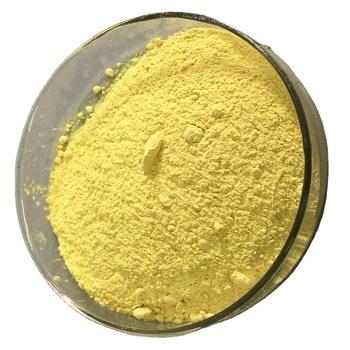
It is amphoteric oxide and thus dissolves both in acids and in alkalies.
PbO + 2HNO3-->Pb(NO3)2+ H2O
PbO+ 2NaOH -->Na2PbO2(Sod. plumbite)+ H2O
On heating in air at 470°C it changes into red lead.
6PbO +O2-->2Pb3O4(red lead)
Uses
1. Lead oxide is Mainly used in electron tubes, picture tubes, optical glass, anti-X-ray lead glass and radiation-resistant rubber products.
2. Used in smelting metal lead and preparing lead glass, lead compound, catalyst and paint drier.
3. Used as analytical reagents, silicate flux, but also for the precipitation of amino acids
4. Lead oxide is used in the manufacture of PVC plastic stabilizer and also is the raw materials of other lead salts. In the paint industry, it can be used with oil to make lead soap for paint driers. It can also be used in the manufacture of high refractive index optical glass, ceramic enamel, plane grinding agent of precision machine tool, medical raw materials and rubber coloring agent. It is also used for battery plate manufacturing, oil refining and so on.
5. Used as pigments, metallurgical fluxes and paint driers, and also used in petroleum, rubber, glass, enamel and other industries
6. Used as fluxing agents of decomposing silicate and metallurgy and paint driers, and also used for determination of gold and silver and precipitation of amino acids. It can be blended with glycerol to produce hard materials as adhesives in glass and rubber industry.
applications
Lead(II) Oxide is used as the starting material in the synthesis of Dibasic Lead Phthalate Hydrate (D417070); a compound that is used in vinyl wire insulation as a flame retardant.
The principal use of lead monoxide is in the manufacture of pastes for the grids used in lead-acid batteries. It is also widely used in optical, electrical, and electronic glasses, as well as in glazes for fine tableware.To render the lead compounds insoluble in foods, the glazes and vitreous enamels are prepared from frits, in which the lead monoxide is converted to lead bisilicate, for example.
Litharge is also used in rubber as a vulcanizing agent, in lead soaps employed as driers in varnishes, in high-temperature lubricants, as a neutralizing agent in organic syntheses, as a heat stabilizer in plastics, and as a starting material in the production of pigments. The preparation, properties, and other uses of lead oxide are described in.
Toxicity
(1) see lead monoxide
(2) The early poisoning symptom is that lead lines appear on the edge of the gums, which may not appear when obviously poisoning, and the skin is soil gray. Neurasthenic syndrome will also emerge in the early period of poisoning. The cerebellar poisoning can result in lead poisoning depression, lead poisoning mania, as well as lead toxicity and paralysis sensitivity multiple neuritis. The lead poisoning can also cause hypochromic anemia and metabolic and endocrine disorders. Moreover, the lead poisoning can inhibit the activity of certain enzymes in digestive system and cause indigestion, abdominal severe pain and liver damage. And it can also cause high blood pressure and cholesterol increasing.
If there is severe abdominal pain, some measures can be taken, such as subcutaneous injection of atropine and other drugs, abdominal warm, enema, hot water bath and so on.
The maximum allowable concentration in air is 0.01 mg/m3.
Wearing mask in operation can block 95% to 97% of lead dust. When steam concentration is high, the filter-type gas mask or hose-type gas masks can be used to mandatorily supply fresh air. In the workplace, eating and smoking are prohibited during working hours. It is essential to take a shower after work and gargle and brush your teeth before meals and after work. After bathing, the lead on the hands or other contaminated parts should also be washed with 1% acetic acid solution. People who have symptoms of lead poisoning should be temporarily out of work, and serious people should be exchanged to the operating post long-termly exposed to lead.
production
(1) Lead oxidation method: heat lead for melting to make lead tablets, and then grind at 170~210℃ and roast for oxidation at high temperature above 600℃. The oxide products are grind to obtain the finished lead oxide.
2Pb + O2-->2PbO
(2) The lead oxidation method sees "lead monoxide".Lead monoxide can also be prepared by heating lead nitrate or lead carbonate as:
2Pb(NO3)2-->2PbO+ 4NO2+O2
PbCO3-->PbO +CO2
Description
Lead(II) oxide occurs in two polymorphs, red, having a tetragonal crystal structure and yellow, having an orthorhombic crystal structure. Both forms occur naturally as rare minerals. The red form is known as “Litharge” and the yellow form is known as “Massico”.
Chemical Properties
Lead monoxide, litharge, PbO, exists in a reddish alpha form up to 489 °C; it then transforms to a yellow beta form (massicot), which is stable at high temperatures. It has a water solubility of 17 mg/L at 20 °C, and is soluble in nitric acid, alkalies, lead acetate, ammonium chloride, and chlorides of calcium and strontium. In alkalies, it forms the plumbite ion, [PbO2]2? . Lead oxides are produced industrially by thermal processes in which lead is directly oxidized with air. In the ball mill process, metallic lead balls are tumbled in air to produce a “leady” oxide, which typically contains 20-35% free lead. The Barton pot process oxidizes droplets of molten lead at ca. 430°C to produce either litharge or leady litharge.
Physical properties
The oxide exhibits two crystalline modifications, the reddish or orange-red alpha form, known as litharge, and the yellow beta form, massicot. The alpha form constitutes tetragonal crystals while the beta modification is a yellow amorphous powder of orthorhombic crystal structure. The alpha form is stable at ordinary temperatures, converting to the beta form when heated at 489°C; density 9.35 g/cm3 (beta form); Moh’s hardness 2 (alpha form); the oxide melts at 888°C; vaporizes at 1,472°C with decomposition; vapor pressure 1 torr at 943°C and 5 torr at 1,039°C; practically insoluble in water (the solubility of alpha form is 17 mg/L at 20°C and that of beta form 23 mg/L at 22°C); insoluble in ethanol; soluble in dilute nitric acid and alkalies.
Uses
Lead(II) oxide is employed mostly in lead-based industrial glass and industrial ceramics, including computer components. It is used as an intermediate/precursor in the manufacture of several products, for example water proof cements, lubricants, lubricating oils, inorganic pigments, lead soaps, petroleum refining, rubber, cathode ray tube glass, and polyvinyl chloride (PVC). It is useful for lead acid batteries as cathode and anode. Lead monoxide scores significant applications in oil, gas and chemical manufactures. It is an efficient catalyst for condensation reactions in organic synthesis.
Uses
In ointments, plasters; preparing solution of lead subacetate. Glazing pottery; glass flux for painting on porcelain and glass; lead glass; varnishes; with glycerol as metal cement; producing iridescent colors on brass and bronze; coloring sulfur-containing substances, e.g., hair, nails, wool, horn; manufacture of artificial tortoise shell and horn; pigment for rubber; manufacture of boiled linseed oil; in assay of gold and silver ores.
Production Methods
Lead monoxide is obtained commercially by two processes, Barton process and the Ball Mill process. The Ball-Mill process involves reaction of molten lead with oxygen or air, and in the Barton process atomized molten lead is stirred in a mechanical furnace above 550°C. The molten metal splashed by the stirring paddle comes in contact with air fed into the cover of the furnace through a pipe, thus forming a mist of finely divided lead monoxide. The mist also contains a small amount of unreacted lead. The mist is passed through an upright shaft where a major portion of unreacted lead falls back into the furnace. It is then rapidly cooled and collected in condensing chambers. The crude product may contain 1 to 3% lead. It is finely ground and sold. The remaining lead in the crude product may be converted into the lead monoxide by stirring the molten mass in presence of air for several hours. The hot product is then cooled rapidly to a temperature below 300°C to prevent any formation of lead tetroxide, Pb3O4.
In an alternate process, a variation of the above method, molten lead is atomized in a shaft furnace. An air stream carries the very finely divided metal into the hot zone of the shaft furnace where the metal evaporates and oxidizes producing very finely divided lead monoxide. The product is passed through the cold zone of the furnace and cooled rapidly. The product obtained is a yellow powdery material, the beta form of lead oxide, massicot, consisting of orthorhombic crystals.
The red lead oxide (the tetragonal alpha modification) is obtained by slow cooling of the lead monoxide melt. The solidified mass may contain the red alpha form of the oxide resulting from slow cooling of the melt, under an outer layer of yellow beta form that may result from the rapid cooling of the outer portion.
Lead monoxide also is produced by a modified Ball Mill process in which high purity lead balls placed in the mill are partially oxidized to produce black or grey oxide. Both the red and yellow form of the oxide may be prepared by alkaline dehydration of lead hydroxide, Pb(OH)2.
General Description
Odorless gray or yellow green or red-brown solid. Sinks in water.
Reactivity Profile
Lead monoxide has weak oxidizing or reducing powers. Redox reactions can however still occur. The majority of compounds in this class are slightly soluble or insoluble in water. If soluble in water, then the solutions are usually neither strongly acidic nor strongly basic. These compounds are not water-reactive. Aluminum carbide is oxidized with incandescence on warming with lead oxide, [Mellor, 1946, Vol. 5, 872]. Mixtures of lead oxide with aluminum powder(as with other metals: sodium, zirconium) give a violent explosions, [Mellor, 1946, Vol. 5, 217, 1941].
Health Hazard
General symptoms of lead poisoning (delayed). Inhalation or ingestion causes abdominal pain (lead colic), metallic taste in mouth, loss of weight, pain in muscles, and muscular weakness. Dust may irritate eyes.
Flammability and Explosibility
Not classified
Purification Methods
Higher oxides are removed by heating under vacuum at 550o with subsequent cooling under vacuum. It is red at room temperature but becomes yellow at high temperatures (~480o) reversibly. [Ray & Ogg J Am Chem Soc 78 5994 1956, Kwestroo et al. J Inorg Nucl Chem 29 39 1967.]
Lead monoxide Preparation Products And Raw materials
Raw materials
Preparation Products
1of6
| Supplier | Tel | Country | ProdList | Advantage | |
|---|---|---|---|---|---|
| Hebei Mojin Biotechnology Co., Ltd | +8613288715578 | sales@hbmojin.com | China | 12456 | 58 |
| Henan Tianfu Chemical Co.,Ltd. | +86-0371-55170693 +86-19937530512 | info@tianfuchem.com | China | 21691 | 55 |
| career henan chemical co | +86-0371-86658258 | sales@coreychem.com | China | 29914 | 58 |
| Hebei Guanlang Biotechnology Co., Ltd. | +86-19930503282 | alice@crovellbio.com | China | 8823 | 58 |
| Hubei xin bonus chemical co. LTD | 86-13657291602 | linda@hubeijusheng.com | CHINA | 22968 | 58 |
| Chongqing Chemdad Co., Ltd | +86-023-61398051 +8613650506873 | sales@chemdad.com | China | 39916 | 58 |
| Hebei Yanxi Chemical Co., Ltd. | +8617531190177 | peter@yan-xi.com | China | 5993 | 58 |
| Hebei Runbin Biotechnology Co. LTD | 13180553332 | 2179877681@qq.com | CHINA | 996 | 58 |
| Hubei Ipure Biology Co., Ltd | +8613367258412 | ada@ipurechemical.com | China | 10326 | 58 |
| Hefei TNJ Chemical Industry Co.,Ltd. | 0551-65418671 | sales@tnjchem.com | China | 34572 | 58 |
View Lastest Price from Lead monoxide manufacturers
| Image | Update time | Product | Price | Min. Order | Purity | Supply Ability | Manufacturer | |
|---|---|---|---|---|---|---|---|---|
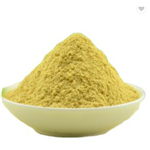 |
2024-04-28 | Lead monoxide
1317-36-8
|
US $2.20 / kg | 10kg | 99% | 300tons | Hebei Dangtong Import and export Co LTD | |
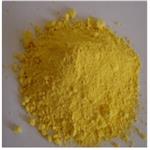 |
2024-04-28 | Lead monoxide
1317-36-8
|
US $3630.00-3623.00 / Tons | 1Tons | 99.99% | 100Tons | Hebei Dangtong Import and export Co LTD | |
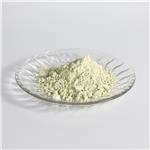 |
2023-09-05 | Lead oxide
1317-36-8
|
US $0.00-0.00 / kg | 1kg | 0.99 | 100tons | Hebei Yanxi Chemical Co., Ltd. |
-

- Lead monoxide
1317-36-8
- US $2.20 / kg
- 99%
- Hebei Dangtong Import and export Co LTD
-

- Lead monoxide
1317-36-8
- US $3630.00-3623.00 / Tons
- 99.99%
- Hebei Dangtong Import and export Co LTD
-

- Lead oxide
1317-36-8
- US $0.00-0.00 / kg
- 0.99
- Hebei Yanxi Chemical Co., Ltd.





